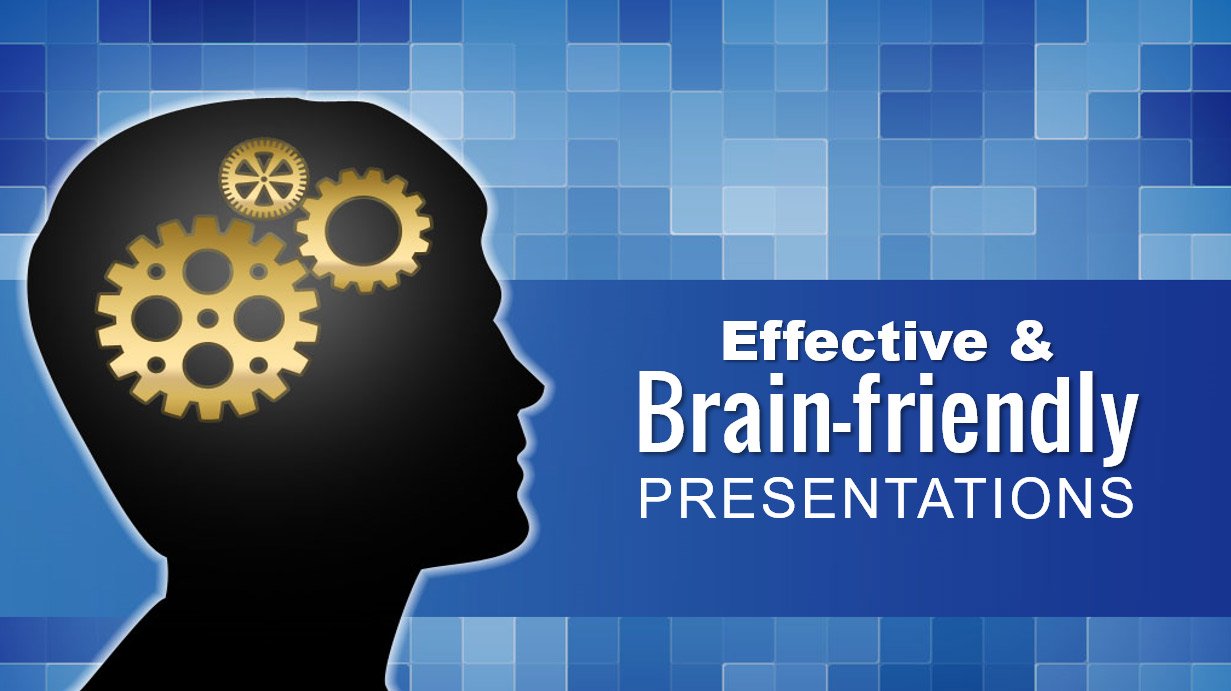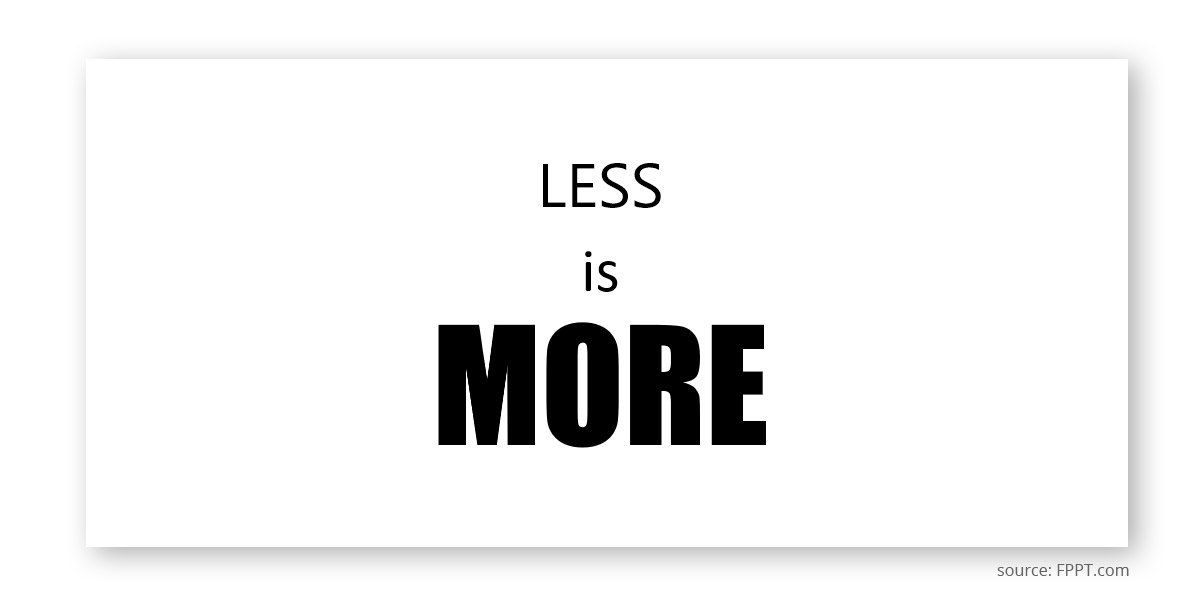5 Tips You Need to Know to Design Effective, Brain-Friendly Presentations
The business world is full of bad presentations. We’ve all been in a boring meeting where somebody’s presenting a block of text on the screen, and it’s so difficult to devote your full attention to the presentation without dozing off. What’s worse is when you’re the one presenting, and you can see your team struggling to understand the topic or to simply stay awake.

Image credits: Brain PowerPoint template by SlideHunter.com
As business professionals, you frequently need to deliver presentations, and you always want to be able to present your ideas as clearly and effectively as possible. Unfortunately, many of the traditional ways of creating your PowerPoint are not working with your audience, simply because they do not take into account how the brain works when absorbing information.
But there’s a new standard of presentation to be followed, and they are called brain-friendly presentations. Let’s find out what it means to be brain-friendly, and we give you 5 designing tips to guide you in making your next brain-friendly presentation.
What are brain-friendly presentations?
Brain-friendly presentations are those that are smartly designed based on research about how your audience’s minds work in terms of absorbing and retaining information. These presentations are tailored to capture their attention, be easy to follow, and leave a lasting impression.
Scientific research from cognitive psychology and behavioral economics give us a lot of insight as to how to communicate your ideas in the best way possible. This article summarizes Dr. Mayer’s main points. When these findings are applied appropriately, they can make your presentation more effective, engaging, and memorable. These qualities are much needed in every business presentation to achieve success.
Here are 5 science-backed tips and techniques that you can now use when creating and presenting your PowerPoint presentations and make them more brain-friendly.
1. Less is more when it comes to text and data.
The number one thing you want to avoid when presenting is information overload. According to the “limited capacity assumption” by cognitive psychologist Dr. Richard Meyer, all humans have a limited capacity for information that they can absorb and understand. Bombarding your audience with blocks of text and unnecessary data will cause them to lose interest and comprehension.
You need to carefully choose what elements to include in your presentation. People can process visual imagery much faster than reading text. Thus, ditch the wordy bullet points. Stick to presenting only keywords and minimal text that support your narration.
Where possible, substitute text with images, graphs, and other visual representations of your ideas. Any unnecessary elements must be excluded to keep the PowerPoint concise and coherent.
2. Format the elements of the PowerPoint cleanly and purposefully.
How your different elements are arranged within the PowerPoint are also crucial in improving your audience’s comprehension. Opt for a light, solid background with minimal yet tasteful designs. Do not be afraid to leave white space because the brain can process information much faster if it’s presented on a plain, white background, rather than a busy or patterned one.
When presenting related text and images, make sure to place them near each other on the screen, or narrate them simultaneously rather than sequentially. This allows your audience to form stronger connections among these elements and build a mental model.
Additionally, when presenting both text and image, it is recommended to place the text on the left and the image on the right side of the screen. This engages the corresponding hemispheres of the brain. Because the right hemisphere is more focused on language while the left hemisphere is focused on visuals (and because there’s a crossing over of neurons), it’s more engaging for your audience’s brains to have text on the left and images on the right.
3. Repeat and stress out elements to reinforce the key concepts.
Guide your audience in building a mental map by having an understandable structure and flow to your presentation. Use organizational dividers like headers and section slides so the audience always knows which part of the presentation you already are.
Make use of powerful visual aids like cause-and-effect chains, matrixes, and flow charts to better communicate your ideas. You can select from our roster of free business PowerPoint templates to create effective visuals and presentations.
To stress out any key concepts, repeat them throughout the presentation and in your narration. When emphasizing elements, opt for a bold font or a larger font size instead of elaborate (and distracting) animations.
4. Your narration is just as important as the visuals of the presentation.
When watching your presentation, the audience equally takes in visual and auditory information. An effective presentation means nothing if you will not be able to express your ideas clearly. In public speaking and persuasion theory, the speaker’s confidence is a crucial factor for the audience to engage and actively listen throughout the presentation.
According to Dr. Richard Meyer’s “voice principle”, the tone of your voice is another important factor to consider to help you capture the audience’s attention. Even in a formal setting like a business meeting, it’s recommended to maintain a friendly yet confident tone, rather than a monotone voice.
5. Use emotions to make your presentation memorable.
Emotion is directly related to memory, and behavioral economics studies have shown that when emotions are evoked during presentations, the audience tends to remember the concepts better. This is because additional brain regions (like the amygdala) get triggered during memory formation when it is tied with strong emotion, leading to stronger memory traces in the brain.
You can evoke different emotions from your audience that are still appropriate in the business setting. For example, you can inspire by emphasizing the benefits that your new project will bring to the business. Or if the mood allows it, you can have your audience laugh with a well-mannered joke. Emotion makes sure that your presentation stays longer in the minds of your audience.
In summary
Gone are the days of texty presentations and boring PowerPoints. Brain-friendly presentations must be the new goal in every business meeting so you can better communicate your ideas to your team and stakeholders. By following our 5 tips and using our free business PowerPoint templates when preparing your next presentation, you can improve your audience’s participation and achieve business success.

